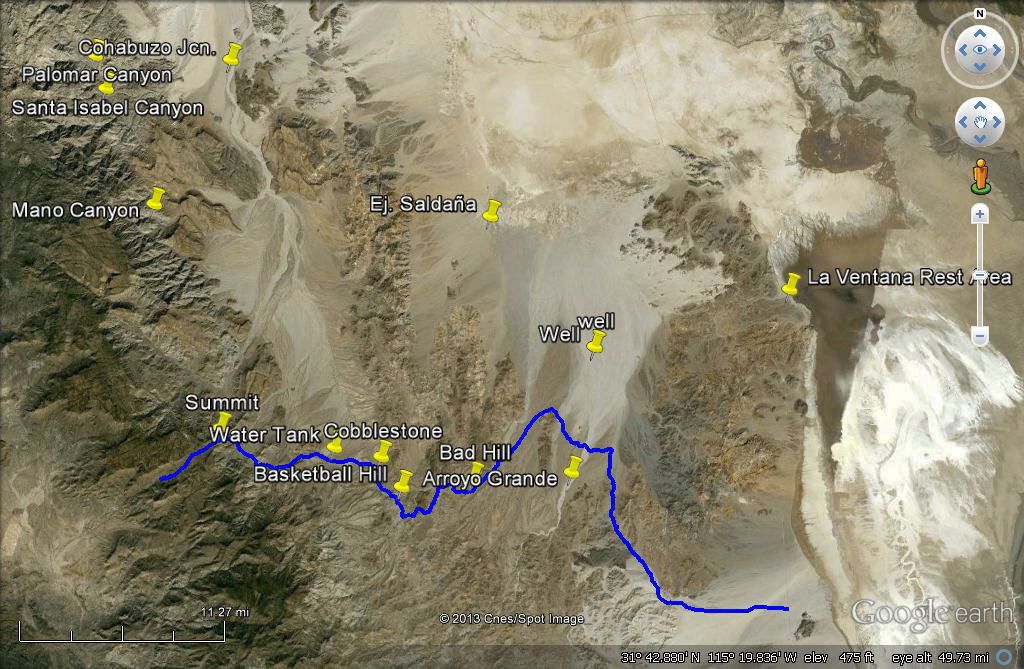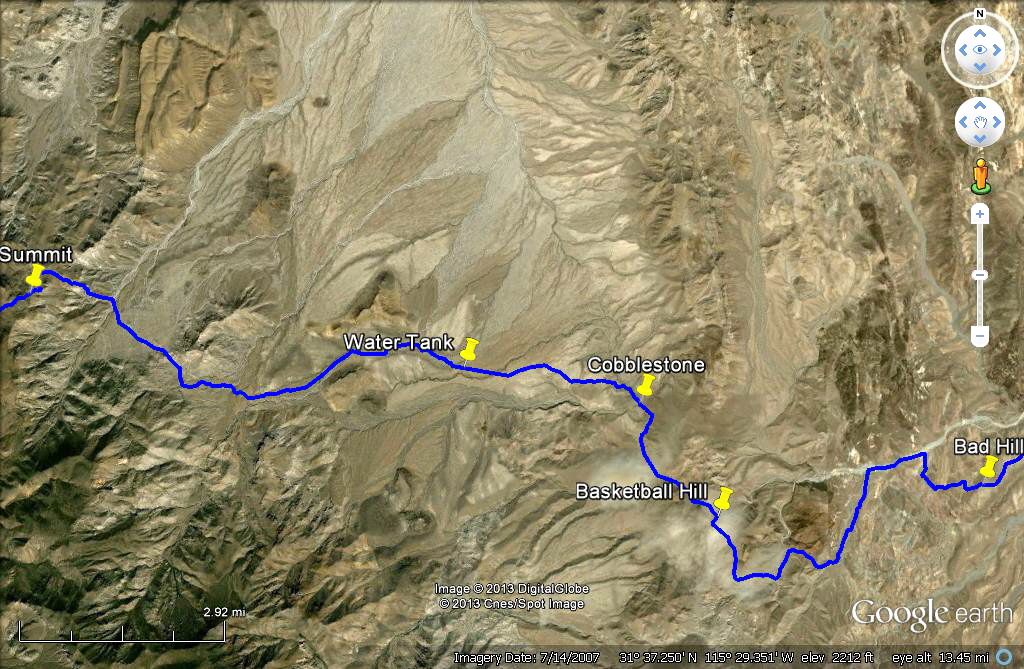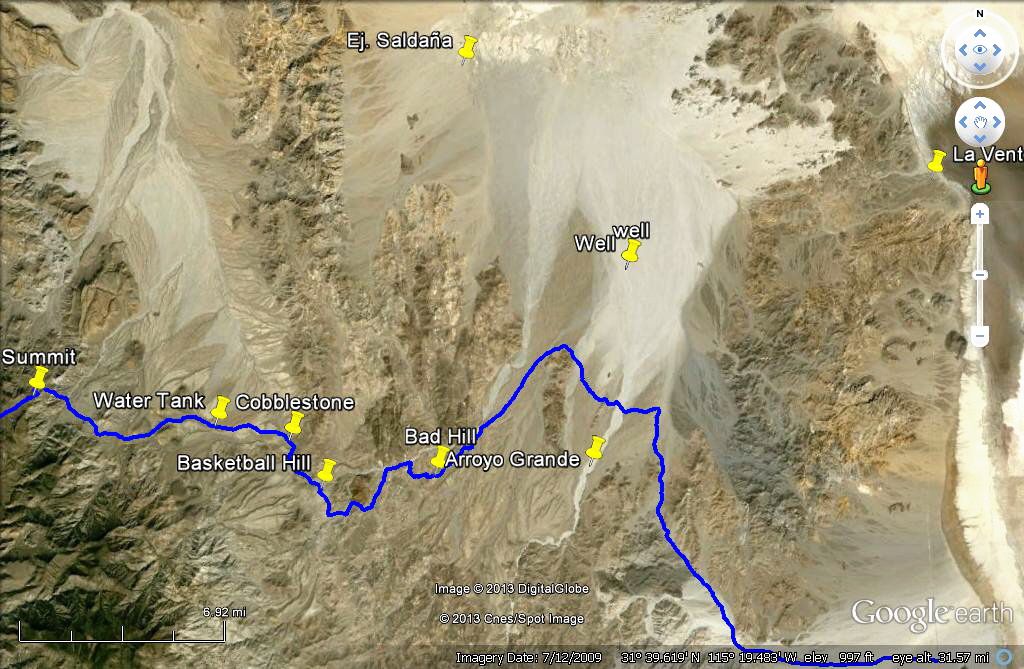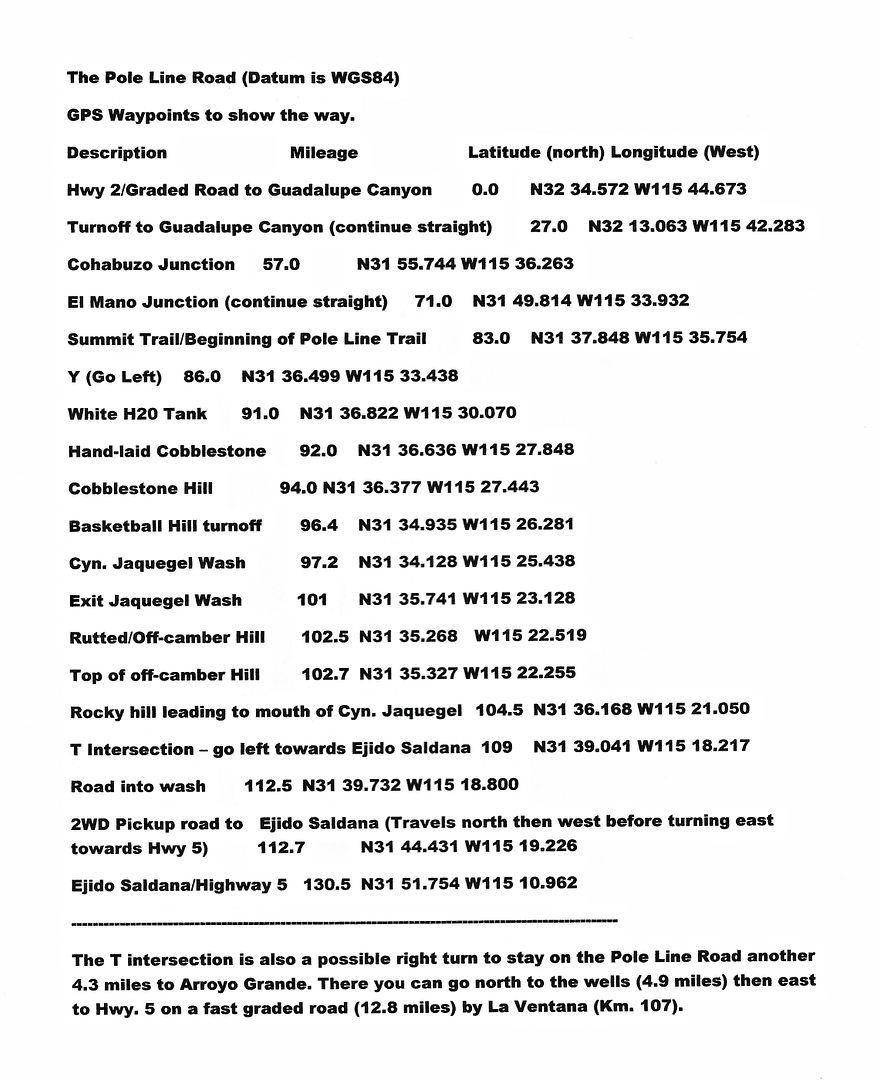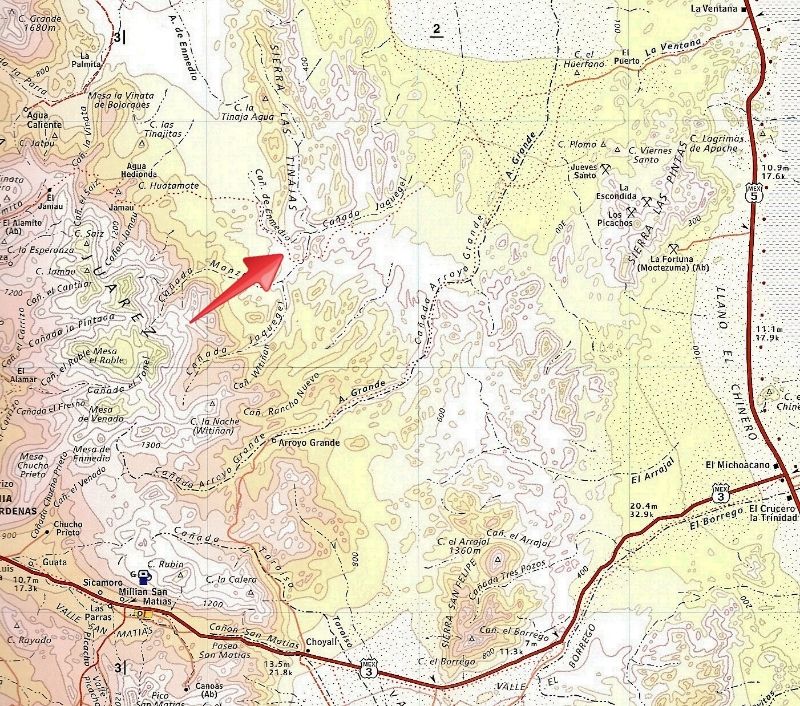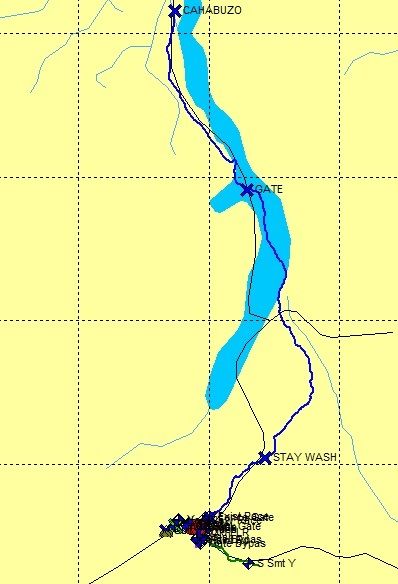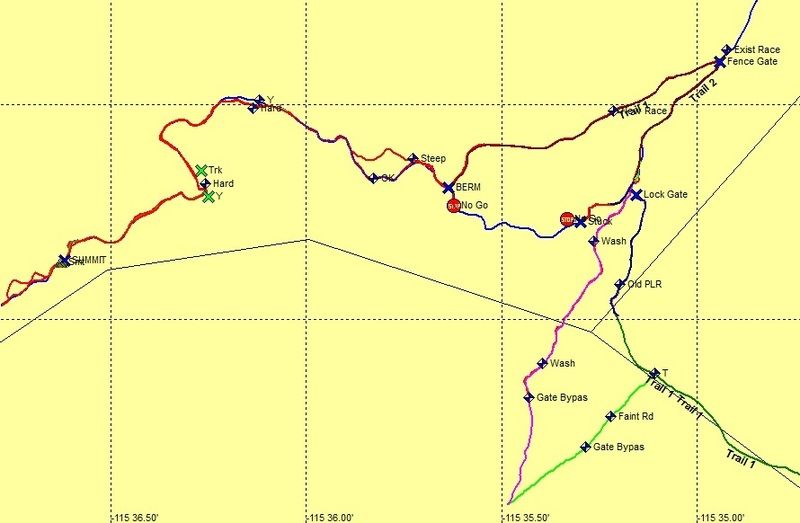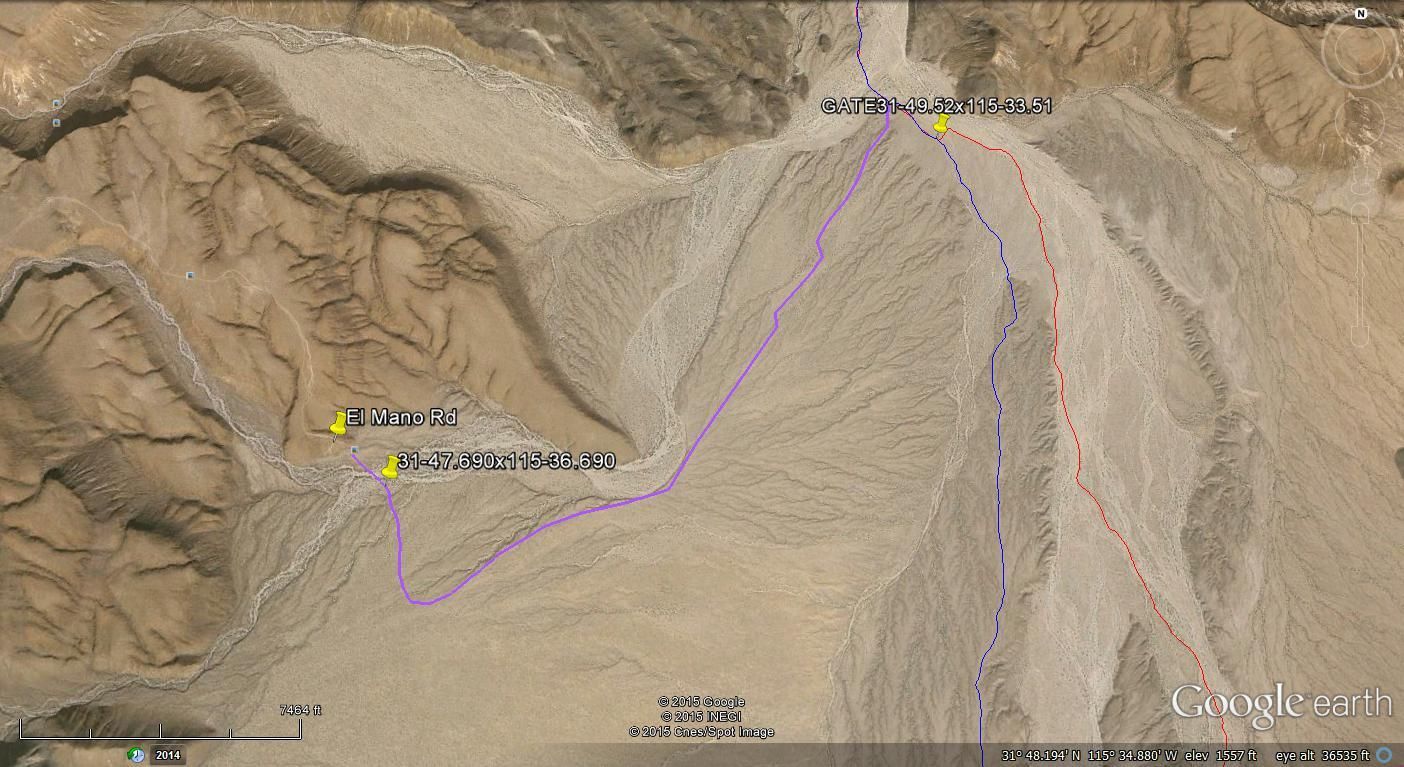Quote: Originally posted by David K  | The Pole Line Group is traveling south from Hwy. 2 at Laguna Salada, past Cohabuzo Jcn. to the base of the old summit (Jamau) road (Pole Line Road)
and joining it going from WEST to EAST.
Saturday Night we will be in the middle of the 20-30 mile WWII road run. |
Mile 1 - Hwy 2/Laguna Salada
Mile 57 - COHABUZO JUNCTION (from Hwy 2)
Mile 83.5 - Gated entrance to Pole Line Road
Mile 96.4 - Basketball Hill
Mile 102.7 - Top of "Bad Hill"
Mile 124.3 - "Y", Go left, east, slightly downhill for El Chinero on Hwy 5 or go right, south, to Hwy. 3.
Mile 130.5 - Hwy 5 a few miles north of Hwy. 5/3 Junction
Although, these mileage numbers seem meager, they consume gallons of gasoline and from Progreso, Mexicali to the Rio Hardy area, consume 29 gallons in
our Jeeps. Be sure to arrive prepared with plenty of fuel. |









